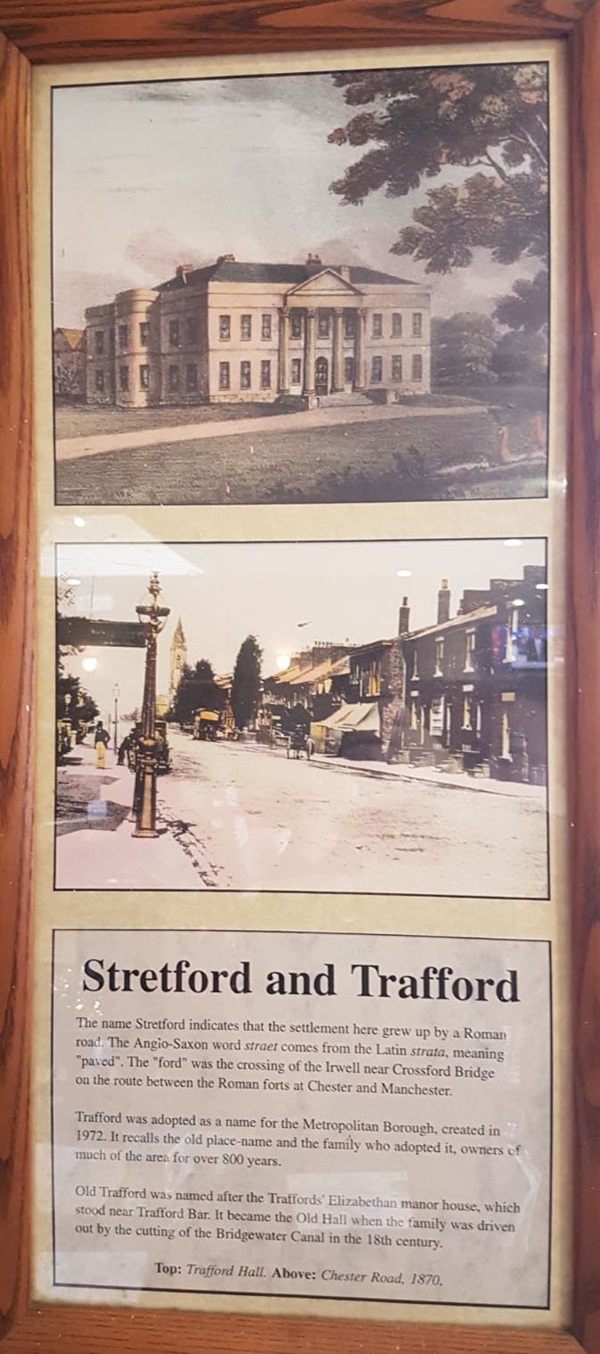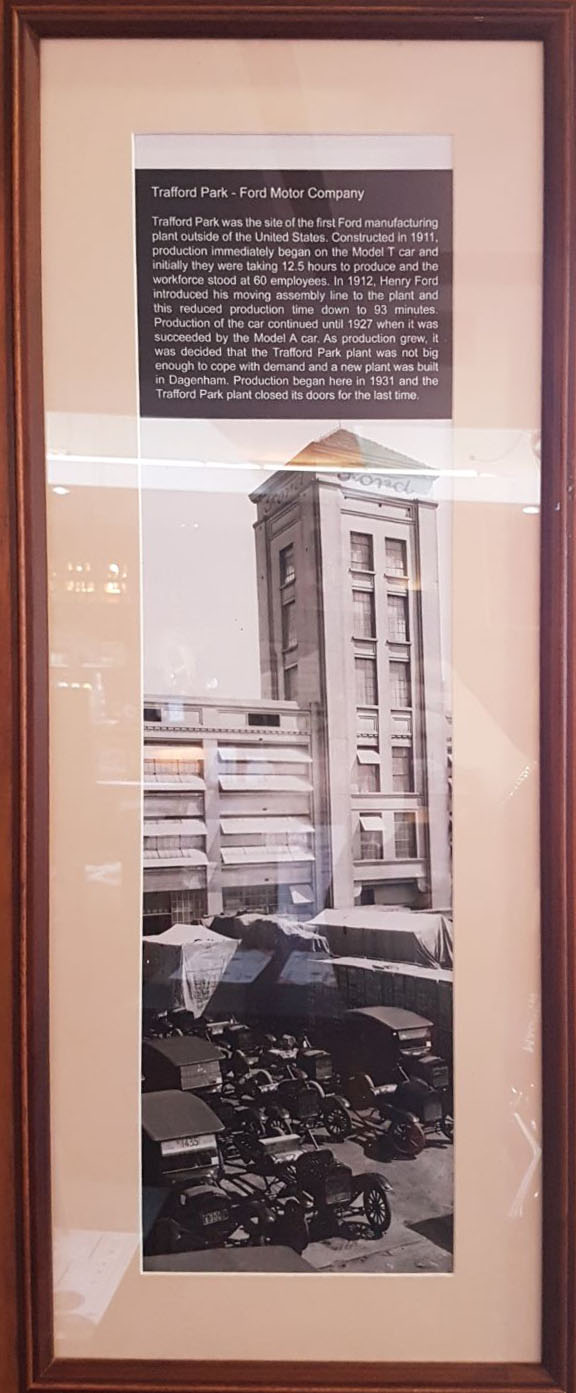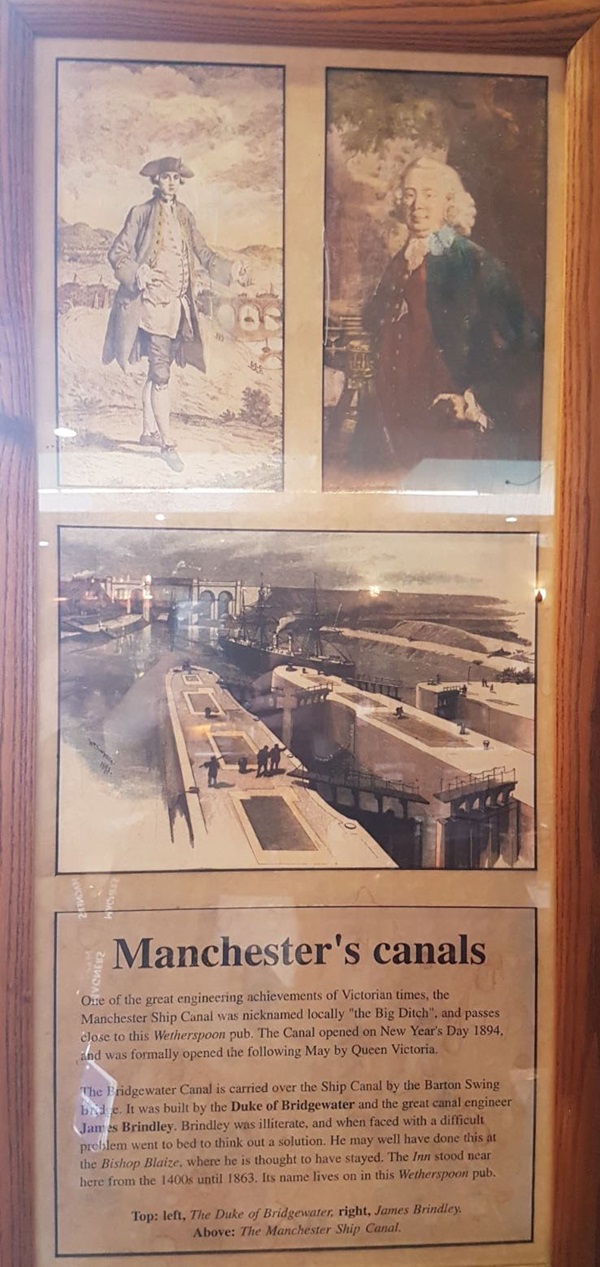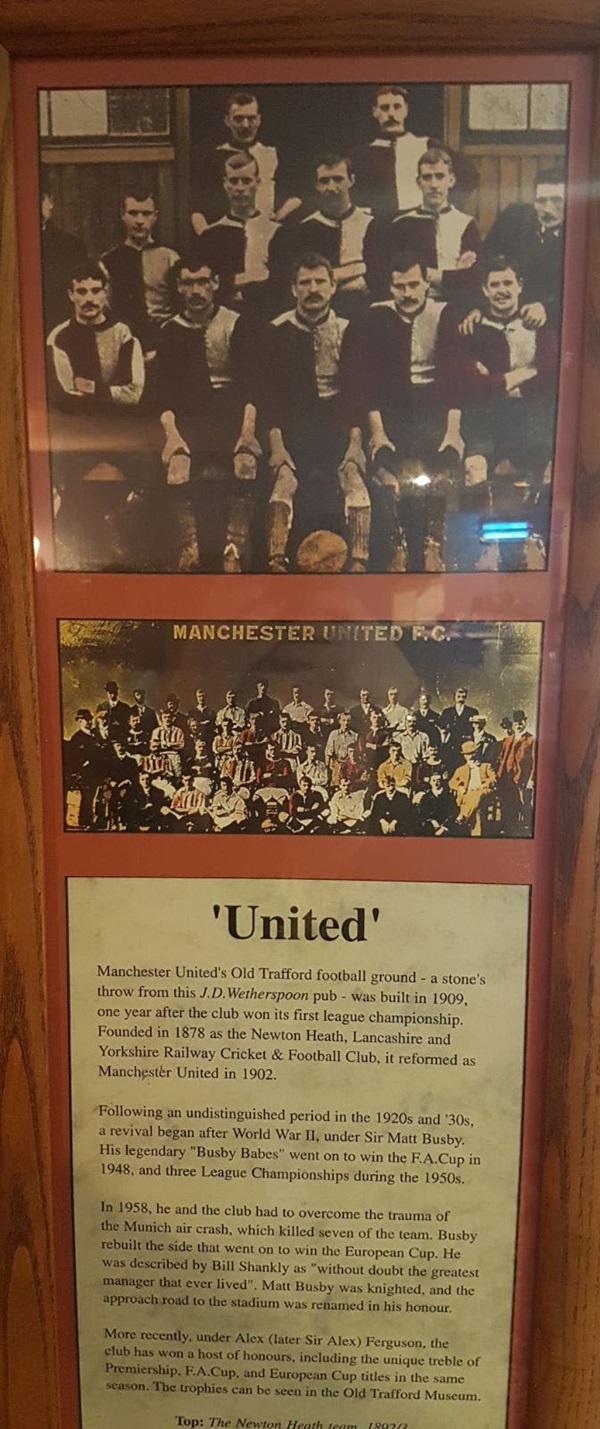The first Bishop Blaize inn, named after the patron saint of woolcombers, was recorded here in the mid 15th century. Demolished in 1863, its name lives on in this Wetherspoon pub. Stretford also takes its name from a river crossing. After it was demolished, the Bishop Blaize inn was replaced by the Talbot Hotel.
Prints and text about the history of Stretford and Trafford.

The text reads: The name Stretford indicates that the settlement here grew up by a Roman road. The Anglo-Saxon word ‘straet’ comes from the Latin ‘strata’, meaning paved. The ‘ford’ was the crossing of the Irwell near Crossford Bridge on the route between the Roman forts at Chester and Manchester.
Trafford was adopted as a name for the Metropolitan borough, created in 1972. It recalls the old place name and the family who adopted it, owners of much of the area for over 800 years.
Old Trafford was named after the Trafford’s Elizabethan manor house, which stood near Trafford Bar. It became the Old Hall when the family was driven out by the cutting of the Bridgwater Canal in the 18th century.
Top: Trafford Hall
Above: Chester Road, 1870.
A photograph and text about Trafford Park.

The text reads: Trafford Park was the site of the first Ford manufacturing plant outside of the United States. Constructed in 1911, production immediately began on the Model T car and initially they were taking 12.5 hours to produce and the workforce stood at 60 employees. In 1912, Henry Ford introduced his moving assembly line to the plant and this reduced production time down to 93 minutes. Production of the car continued until 1927 when it was succeeded by the Model A car. As production grew, it was decided that the Trafford Park plant was not big enough to cope with demand and a new plant was built in Dagenham. Production began here in 1931 and the Trafford Park plant closed its doors for the last time.
Prints and text about Manchester’s canals.

The text reads: One of the great engineering achievements of Victorian times, the Manchester Ship Canal was nicknamed locally ‘the Big Ditch’, and passes close to this Wetherspoon pub. The canal opened on New Year’s Day 1894, and was formerly opened the following May by Queen Victoria.
The Bridgewater Canal is carried over the Ship Canal by the Barton Swing Bridge. It was built by the Duke of Bridgewater and the great canal engineer James Brindley. Brindley was illiterate, and when faced with a difficult problem went to bed to think out a solution. He may well have done this at The Bishop Blaise, where he is thought to have stayed. The inn stood near here from the 1400s until 1863. Its name lives on it this Wetherspoon pub.
Top: left, The Duke of Bridgewater, right, James Brindley
Above: The Manchester Ship Canal.
Prints and text about Manchester United Football Club.

The text reads: Manchester United’s Old Trafford football ground – a stone’s throw from this J D Wetherspoon pub – was built in 1909, one year after the club won its first league championship. Founded in 1878 as the Newton Heath, Lancashire and Yorkshire Railway Cricket & Football Club, it reformed as Manchester United in 1902.
Following an undistinguished period in the 1920s and 30s, a revival began after World War II, under Sir Matt Busby. His legendary ‘Busby Babes’ went on to win the FA Cup in 1948, and three league championships during the 1950s.
In 1958, he and the club had to overcome the trauma of the Munich air crash, which killed seven of the team. Busby rebuilt the side that went on to win the European Cup. He was described by Bill Shankly as “without doubt the greatest manager that ever lived”. Matt Busby was knighted, and the approach road to the stadium was renamed in his honour.
More recently under Alex (later Sir Alex) Ferguson, the club has won a host of honours, including the unique treble of Premiership, FA Cup and European Cup titles in the same season. The trophies can be seen in the Old Trafford Museum.
Top: The Newton Heath team, 1893-3
Above: 1902 – the team and staff below their new name.
If you have information on the history of this pub, then we’d like you to share it with us. Please e-mail all information to: pubhistories@jdwetherspoon.co.uk